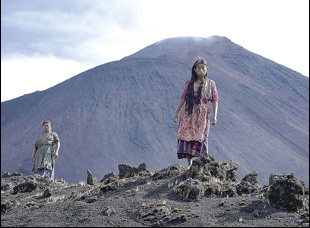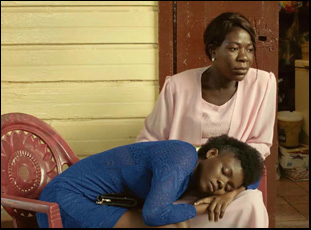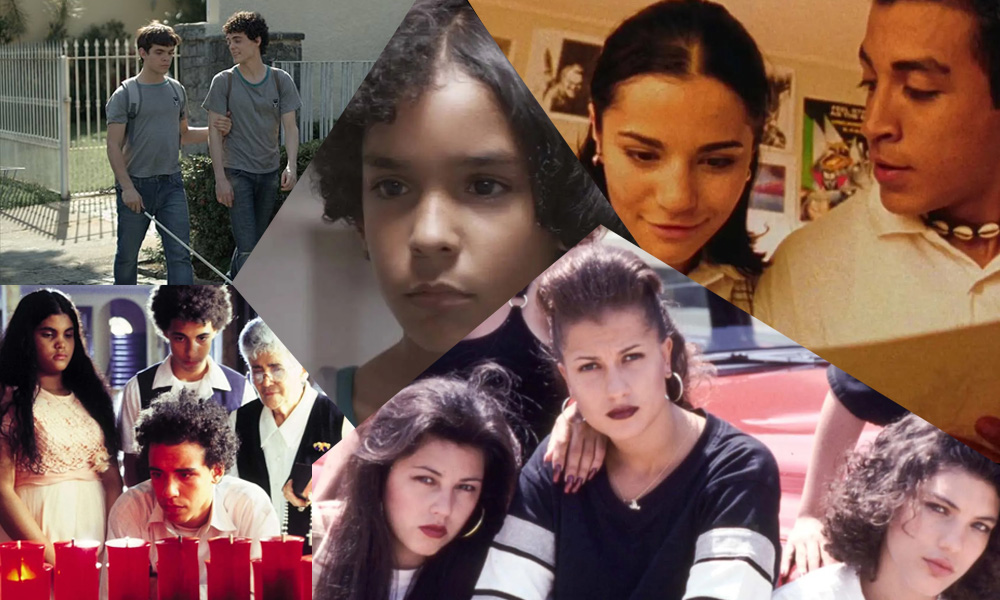If Sari Navarro was after a mix of the familiar and the foreign when thinking about films that would reflect the experience of coming of age for the series “Hasta La Raíz,” now underway at the Academy Museum in Los Angeles, they couldn’t have planned for a better opening night than screening Allison Anders’ “Mi Vida Loca” to a sold out crowd where the 1993 film, about lifelong friends who get caught up in the gang life, shot less than a mile from the Ted Mann Theater on the corner of Wilshire and Fairfax could seem so close and so far away at the same time.
“There was someone I went to elementary school with who was there because we both grew up between Echo Park and Silver Lake,” said Navarro, the films programs coordinator at the museum who put together the nine-film series that runs through October 13th. “It was a different time and it looked much different back then, so the film is really very much a time capsule for us of what was.”
When youth itself can be a distant memory until it’s brought back into sharp relief, something from another era seemed like the right way to start Navarro’s largely contemporary survey of films of Latine/X films from around the world, but the ultimate aim is “Hasta La Raíz” is to pull people together in a shared experience when films about growing up may look a little different depending on where they’re set, but the emotional journeys can be quite similar.
Navarro spared no effort to close the gap when even “Mi Vida Loca,” which premiered at Cannes and had a full-fledged theatrical run in the U.S., has now become difficult to see after an initial release on home video went out of print years ago, yet whether it’s Jayro Bustamante’s “Ixcanul” (Sept. 20, with the short “Mi Amigo Angel”) told on the side of active volcano in Guatemala or Mariana Rondón’s frisky drama “Pelo Malo” (Sept. 28) where a humble apartment in Caracas becomes a battleground between a genderfluid nine-year-old and their mother who insists that they are a boy, the selection reveals many of the same dilemmas for those learning to stand up on their own and forging an identity away from their parents, often burdened by a past that they are only starting to understand as they become adults.
In the weeks ahead, the Academy Museum will play host to screenings of Aurora Guerrero’s “Mosquita y Mari” (Sept. 27) and Peter Sollett’s “Raising Victor Vargas” (October 12) accompanied by the filmmakers, as well as the 2018 Teddy winner at Berlin – and a favorite of ours — “The Way He Looks” (Sept. 23) from Brazil, Fernando Sariñana’s endearingly clandestine romance “Amar Te Duele” (Sept. 28) from Mexico, and Gessica Généus’ 2021 drama “Freda” (Oct. 13), set in Port-au-Prince in 2018 where a young woman is torn between seeking safety for her family and leaving the only home she’s ever known as Haiti falls into political turmoil. With the series already in full swing, Navarro graciously took some time away to talk about how “Hasta La Raíz” came into focus, the musical inspiration behind the title and providing a platform for films that haven’t gotten quite the spotlight that they deserve.

The decision to program these films came because I wanted to showcase different perspectives around the subject of coming of age and what that looks like not just for Latina young adults in the United States but also in different Latin American countries. As part of the series, we’re also screening “Ixcanul,” which is the first film made in the Kaqchika language about a Mayan teen who must choose between running away to the United States and staying in her village that is settled around a volcano. There’s also “Freda,” which is a film from Haiti offering a rare woman’s perspective and tackles subjects such as colorism, mother-daughter relationships and the political state of the country…
Because this series will unfold in Los Angeles, did that lead you to specifically include L.A.-based films like “Mi Vida Loca” and “Mosquita and Mari”?
I actually didn’t want to focus too much on L.A. I wanted to like program films from other countries and when thinking about programming, I also want to make sure that I’m also highlighting marginalized voices. There aren’t many coming-of-age Latine/X stories from a queer perspective, so that’s why I ended up programming “Mosquita y Mari” and the other queer film is “The Way He Looks” from Brazil. “Mi Vida Loca” and “Mosquita and Mari” are from L.A. but I didn’t want to highlight [that] too much because I want to show what Latin cultures in other countries are like because although we are similar we all have different cultures and customs as well. When it came down to it, I started thinking [in general] about whose voices we hear less often of and then also I was thinking about programming titles that are more well-known with titles that are less well-known to expose audiences to films they may not know about.
The pairing of “Ixcanul” with the short “Mi Amigo Angel” seems particularly inspired. How did those come together?
That’s my Central American night essentially. I’m Honduran and I wanted to highlight Central America as well because I feel that we are often overlooked. When I was trying to find out what other films might be available, they’re virtually non-existent. It’s really sad those are voices that we’re not seeing on screen and I remember when I saw “Ixcanul” a couple years ago, I was so excited. I [thought] “Oh my god, a film from Guatemala!” — I get excited when I see any Central American filmmaker doing something and it was such a beautiful film that got its rightful recognition.
I had actually seen “Mi Amigo Angel” a couple years ago and it’s considered the first Honduran film, and one of the very few. It’s directed by Palestinian Honduran director Sami Kafati, who had directed it to actually get in film school in Italy and it follows the day in the life of a shoeshine boy. Just offering that perspective is crazy because when I saw that film it shows the capital Tegucigalpa and I [thought], “Wow, it hasn’t changed much.” When I had this opportunity to program it, the challenge was figuring out like who owned the rights and who has a copy that we could screen, so I did some digging and found some Honduran archivists from the Cinematheque in Honduras at the university. They own it at the rights and coincidentally restored the film recently during the pandemic and just haven’t been able to screen it, so not only are we premiering the restoration, but it’s perhaps the first time that it’s screening in the United States.
I couldn’t help but notice that the series takes its title from the song “Hasta La Raíz,” and it was interesting to learn that your father who you’ve said got you into movies was also a radio personality and music programmer. Are those things intertwined in your mind?
Yeah, music for me is very important. I tend to title things after songs that inspire me. I actually created a a playlist for this series that will play at the museum in the lobbies when the films are screening. That song in particular [“Hasta La Raíz”] is really special because Natalia Lafourcade is paying tribute to Mexico and on a surface level, it’s a song about a breakup, but she sings about circumstances that build up one’s life from family and friends, lived experiences and home to the importance of keeping those roots. Those, along with the themes of self-identity, sexuality, betrayal, class structure — are all subjects that come up when you’re growing up, so I thought it really aligned very well with the series, just the the importance of always keeping your roots even with all these things happening around your life.

All of them, to be honest. This series is really exciting for me and “Freda,” the film that is closing it out, premiered at Cannes in 2021 and I think it suffered a bit coming out of the pandemic, like [many of] the films that came out around that time because it actually doesn’t have U.S. distribution. I had to reach out to the the sales agent to get permission to screen it and it offers a rare woman’s perspective of growing up in Haiti and it tackles the subjects of colorism. It’s a really important film for people to see and it really helped me drive home my series note when I was writing it, so when I feel like it really didn’t have an opportunity to get seen, I would really want for people to come out, especially the Haitian community.
Ultimately, my goal for this series is for Latine/X people from all these countries to feel seen and heard. I think it aligns with the Academy Museum’s mission of celebrating global cinema and its history through inclusive programs because cinema is global. It’s not just Hollywood and my goal is I want people to leave and feel seen.
“Hasta La Raíz” runs through October 13th at the Ted Mann Theater at the Academy Museum in Los Angeles.




